Commodore XX – Gaming PC Review
Commodore XX – Gaming PC
Grab your Transformers and Charles & Di wedding mugs - an 80's icon returns. But can Commodore cut the mustard in the 21st century?
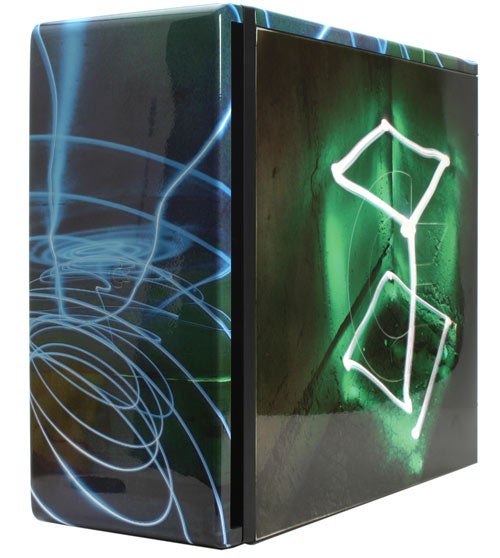
Verdict
Key Specifications
- Review Price: £2602.22
VIC-20, Commodore 64, Amiga. If you were a child of the 80s with any interest in computers, then there’s a good chance that these names mean a lot to you. Hours of sitting in front of a whirring, buzzing tape machine to play a game that….well, was basically rubbish, well, it’s what we did. Fans of Top 10s will be fascinated to know that the Commodore 64 is still the biggest selling single computer system of all time. It’s the ‘Thriller’ of computers – heck, it even came out in the same year – 1982.

Those heady days are long gone, and even though the original company went bankrupt in 1994, the Commodore brand name has been knocking about ever since. Clearly people have great affection for the name, as the current owners have relaunched the brand for the modern age with a series of high-end PCs, under the moniker of Commodore Gaming. The company has serious intentions and is shipping to the Netherlands, Germany and the UK and has announced plans to enter the US market too. Ambitious then.
I’ve been told that the owners are all big fans of the original Commodore machines and that the company has been set up in the spirit of those times – to offer the best entertainment machines it can, by gamers, for gamers. There is a flavour of this on the Commodore Gaming web site, with a section dedicated to the history of Commodore. The question is, is appropriating a classic name enough for it to succeed, and is there space for them in the market along with obvious rivals such as Alienware?

Four basic specifications are on offer using the titles, XX, GX, GS and G. While the G range starts at just over £1,000, you’ll be looking at closer to £3,000 for the high end XX. Naturally, the machine we’ve been sent is based on the top-end machine.
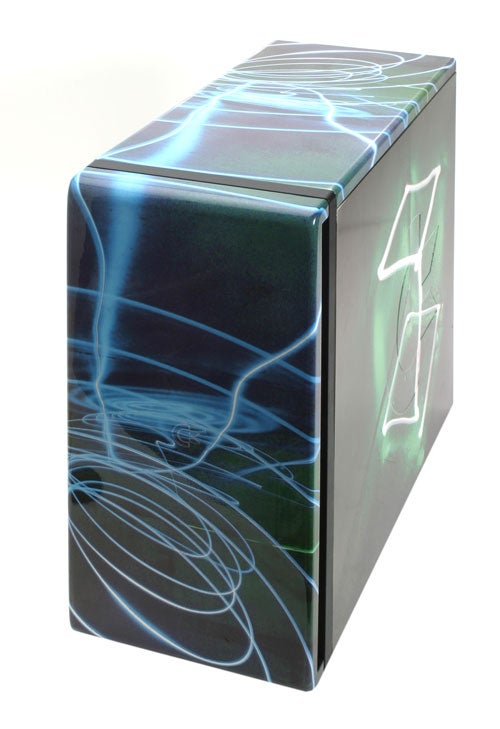
You can buy direct from the web site, but the company will also be selling though retail – it wants you to be able to touch and feel its machines as well as view them online. The reason for this is that all its machines are available with customised artwork on them – dubbed ‘C-Kin’ by the company. This could potentially be the killer weapon in Commodore’s arsenal. It has a database of artwork online, in a number of categories so your machine won’t look the same as everybody elses’. Some are great, some are shocking – (lime green anyone) but Commodore is also encouraging people to submit their own artwork – a community thing.
Unfortunately, the machine we were sent seems to be one of the worst of all the choices, but that’s just my opinion. The C-Kin isn’t air brushed, nor is it just a sticker but it’s actually burned into the panels of the case and feels quite smooth and durable. What’s more, if you get bored of your choice, you can order new panels from Commodore, to keep the look of your machine fresh.
The case itself has the Commodore logo all over it in a ‘we own it, and darned we’re going to use it’ kind of way. It’s embossed into the front door that covers the drive bays and when you open that up, you’ll find the full logo on the inside of the door and on each of the blanking plates. It could easily have been naff, but the slighty raised embossed logo is subtle.
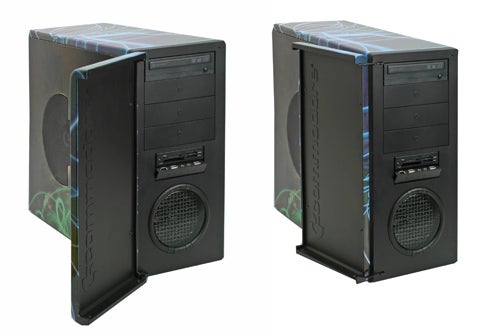
The hinge on the front door is effectively double-jointed so can fold all the way back, which is good – normally these doors don’t open all the way, which is a pain. Another stand out feature is the large Commodore shaped logo in the side of the case, behind which sits a 200mm cooling fan, which is the largest I’ve ever seen on a system. There’s a large circular grille at the front too, behind which sits a 120mm fan with another 120mm fan at the rear. This flashes in an array of disco lights too, but patently, with the door closed you won’t be able to see it.
I do like the C-Kin concept a great deal, but, and it’s a big but, there’s no getting away from the fact that, C-Kin aside, this is standard midi-tower case that you could buy off the shelf. There are five 3.5in internal bays, and above this are two external 3.5in bays, the top one us occupied by a card reader, and the one below it is filled by front mounted USB, Firewire and headphone and micophone ports. This is located inside a flap that is hidden by a cover with the corresponding icons. It’s quite a cool touch the way this pops out, but the flap didn’t quite have the solid quality feel that I was expecting. In fact that was something of a theme with this case, with slightly wobbly buttons that didn’t really inspire confidence, especially at the price.

Turn on the PC and you’ll find the grilles at the front and side light up one of several colours – there are buttons round the front grille to turn these one and off – one for the front light and one for the side. Keep pressing and you can get both lights to flash through each colour consecutively – brilliant if you want to drive everyone in the vicinity crazy.
The next thing you’ll notice is the sound – in this specification this is a noisy PC, and the noise insulating panels on the interior are just not enough to do much about it.
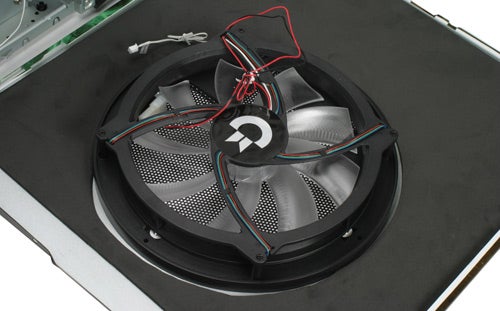
Let’s talk about that spec. The motherboard is an Asus P5N32-E SLI – not quite the top-end Asus Striker, but it’s got everything you really need. It’s a high quality board based on nVidia’s 680i chipset, and boasts an 8-phase power design, which Asus claims makes for a more stable system. It uses a heat-pipe system to reduce the amount of fans needed, not that it can prevent this box from being noisy. It’s got two PCI Express x16 slots for graphics cards, a third full length x8 slot, and the smaller PCI Express slot, which operates at x1 speeds. You get two of your olde worldy PCI slots and you also get six SATA ports.
Round the back is interesting as it does away with any legacy connectors – there’s no parallel or serial ports. What you do get are two Gigabit Ethernet ports, and 8-channel surround sound output, though as set up, only via optical or coaxial digital outputs. This is because the analogue outputs come on an external daughter card, which, perfectly sensibly, Commodore has not fitted due to the presence of a Creative X-Fi Xtreme Gamer card. While this is a much better choice for gaming than the onboard sound, I do think it would have been better if Commodore gave the option to buy the full X-Fi Fatal1ty, which includes 64MB of X-RAM. This provides support for more simultaneous audio streams and is supported by titles such as Battlefield 2 and F.E.A.R. There are eight USB 2.0 ports in total, two at the front, six at the rear. Finally, you also get a full 6-pin FireWire connector and PS/2 and keyboard ports.
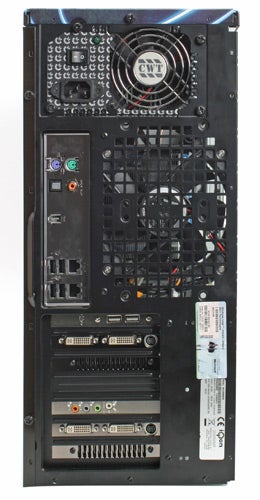
If you plump for the Commodore XX as we’ve got here, you get Intel’s current flagship processor – a QX6800, offering up four Core 2 Duo cores running at 2.93GHz, with two sets of 4MB shared Level 2 caches – 8MB in total. To back this up there’s 2GB of Corsair Dominator 1,066MHz RAM. The front side bus of the CPU is 800MHz so the memory will run at that speed at stock. However, it does give you some headroom for overclocking, should you wish to delve into those dark arts.
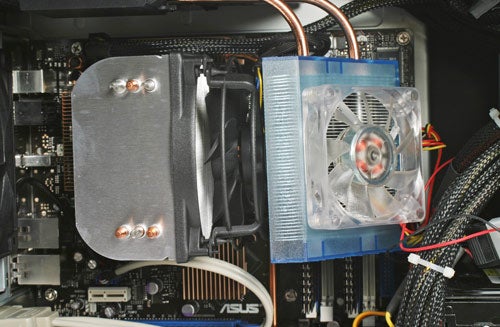
To cope with the top-end CPU, Commodore has fitted a pretty hefty CPU cooler with a large fan pulling air into it. Right next to this Commodore has fitted yet another heatsink and fan. This has grooves at the base which cover the top of the heatsinks of the Dominator DIMM modules. This looks like a clever bit of design to pull the warm air from the memory heatsinks away. There’s a good system going on here then – large side fan draws air in into the first heatsink fan, then into the CPU cooler and then out of the rear 120mm. In addition to this you’ve got the two exhausts from the back of the two GeForce 8800 GTXs. On top of this, literally, you’ve got the PSU fan. It’s not surprising then that there a fair amount of heat being chucked out the back of this machine so it’ll need to be placed somewhere well ventilated.
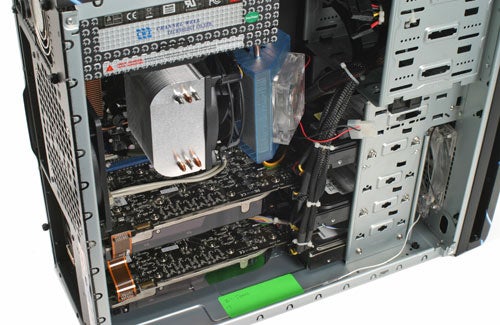
Adding to this heat haze are three hard disks – two legendary Raptors spinning at 10,000rpm in RAID 0 to provide the fastest speeds, great for loading levels in games and a 500GB disk for storing data, such as large HD video files, which the quad-core uber CPU should make short work off – as an example.
A problem I noticed was that should you wish to add another hard disk, you couldn’t- the 8800 GTXs are quite long and go into the space of the two free 3.5in bays, so they’d be nowhere to put them. An external SATA port would have been a way round it as you’d then get the same performance as an internal drive, but as it is, you’re limited to the FireWire port at the back – which is only 1394a – not the faster b version.
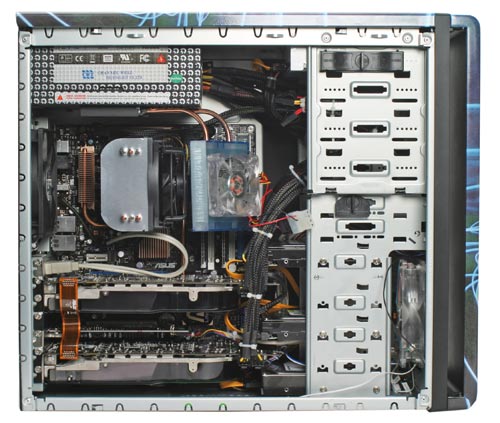
In terms of construction the interior of the case is done as well as it could be – very neat and tidily. All the major cables are kept in place with cable ties and everything is sensibly routed. The only problem is that it’s all a bit, well ordinary. The hard disks are just kept in place with regular screws, though there’s some toolless entry action for the optical drive and the card reader slot.
When you open the side of the case there’s a group of wires which trails from the LEDs round the front fan. This is in order to get power to the coloured LED lights on the side. This is a perfect example of how this sort of system differs from an Alienware. On the similarly specified system I reviewed last December there are four contacts on the side of the case, so all the LEDs work when you put the case side on, without any wires trailing – much cooler.
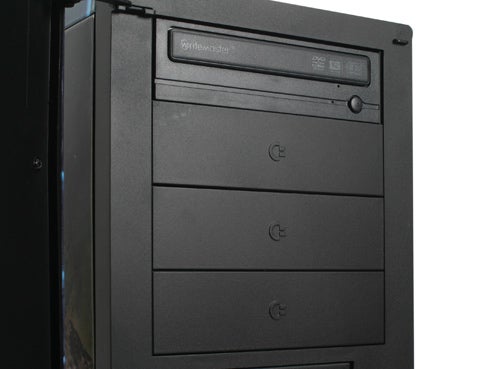
Another issue is that the side of the case is difficult to get back on. The large side fan touches the CPU heatsinks and it’s a real faff to deal with. Also it doesn’t feel particularly brilliant. The build quality isn’t bad, but it’s not rock solid either – there’s quite a bit of flex in the drop down USB ports at the front for example.
It’s a bit different from the large, solid case you’ll get with say, an Alienware. Alienware features custom cases that you can only get from that company and it has put time and effort into designing them. Commodore is using an essentially standard case with customisation limited to some embossed logo and aside from this relies entirely on the external C-Kin to give it individual appeal.
I’m not sure that’s enough.
The problem is that this system just doesn’t make you feel special when you’re using it, and if you’re spending over two and half grand I think that’s a problem. If you’re spending less it may not be such an issue, but at this price level, I’m not sure that people will want a Commodore. It depends ultimately on the appeal of the C-Kin, because aside from that there’s little to recommend this case.
There’s no doubt that Commodore is able to undercut Alienware on price. I specced up as similar a system as I could and the Commodore came in at around £500 cheaper, which is a fair wodge of cash. Of course, Commodore’s approach isn’t quite as slick, but makes for a more affordable system. Both have their merits and both have their place.
The other issue I have with the Commodore is really the noise it makes. It’s put a lot of effort into cooling, but I do think it needs to work on reducing overall system noise – the single piece of sound deadening on the inside of the case, just isn’t enough.
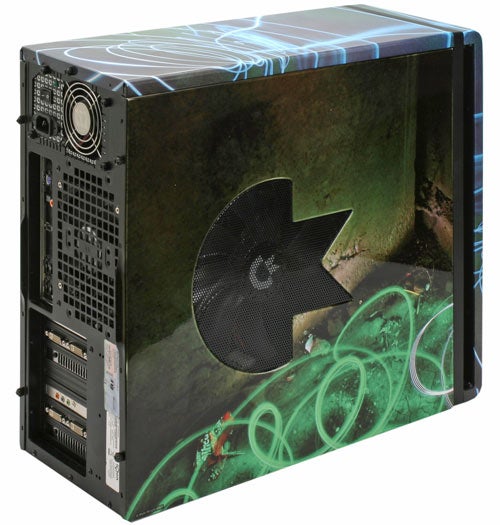
On the up side, it’s pretty darn fast, as you would expect for the price, with 2D scores all amongst the top tier of the systems we’ve seen. For 3D testing we limited ourselves to 1,920 x 1,200 and 2,560 x 1,600 as, for resolutions below this, there’s no point having SLI. It proved absolutely stable running our full tests suite and completed the full gamut of 2D and 3D tests without fuss, which is always good to see. It’s hard disk score in PC Mark is not quite as fast as we got from the two Raptors in this Shuttle SD39P2 – possibly the RAID chipset on Intel’s hardware is slightly better, but all in all the scores were very strong.
The sight of the Commodore logo brings back wonderful memories, but once you’re past getting misty eyed this is a fast, decently put together system with a very ordinary case, livened up with artwork. If you’re after a ready-made, off-the-shelf system, that’s a bit different, but don’t want to pay Alienware prices, then Commodore could well be for you – just be aware of the expansion and build quality limitations.
”’Verdict”’
If you’re expecting the same level of innovation that Commodore delivered in the early 80s then you’ll be disappointed – this is just a PC. The C-Kin concept is pretty cool and is its biggest selling point. There’s a good selection to choose from and you should find something you really like. Be warned though, the case underneath is average at best and in the end, I just didn’t get the same buzz from using it as I would from a Dell XPS, Alienware or Vadim PC.
However, if you like the idea of artwork on your PC, and want to save a few quid compared to the likes of the aforementioned, it’s got to be worth considering. And yes, it’ll play Space Invaders.


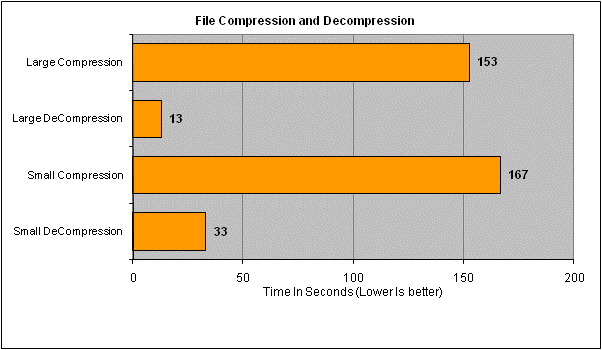
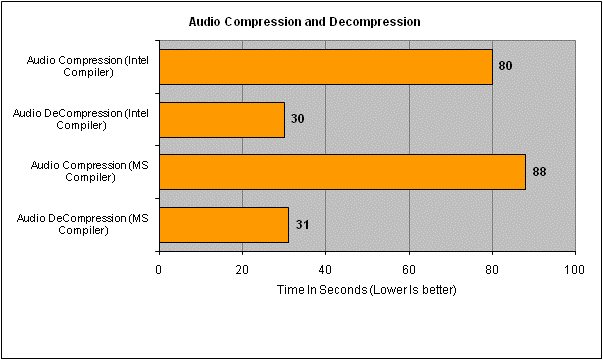
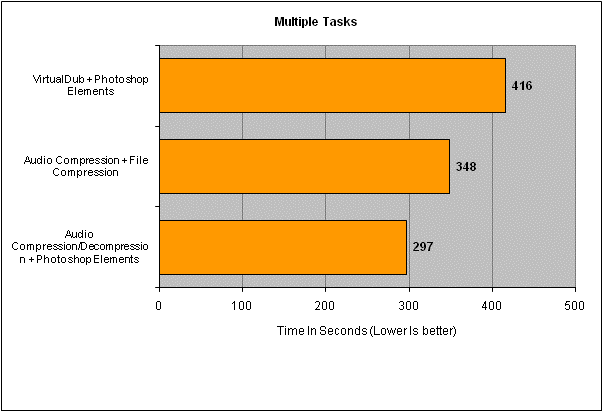
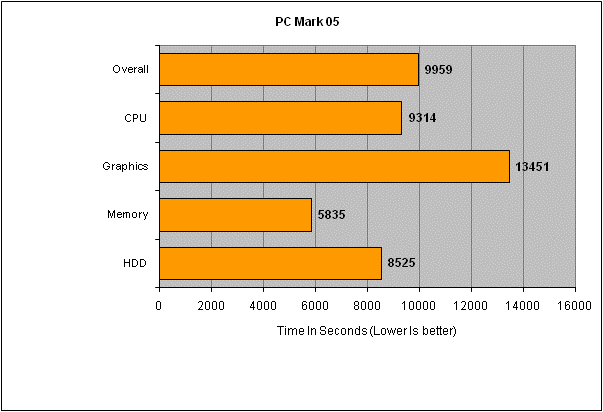
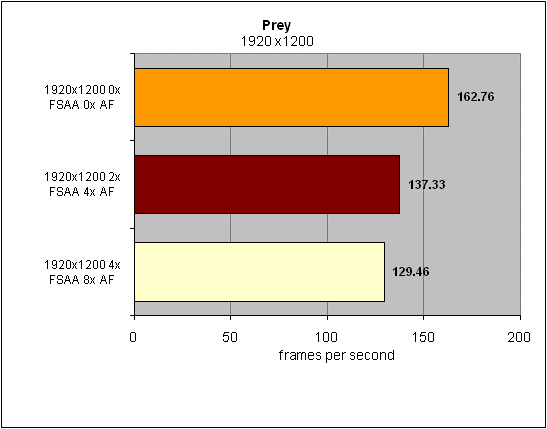
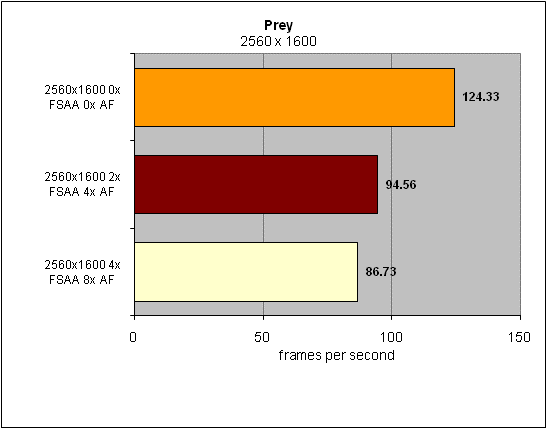
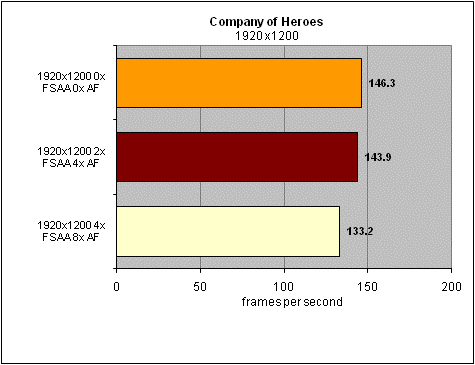
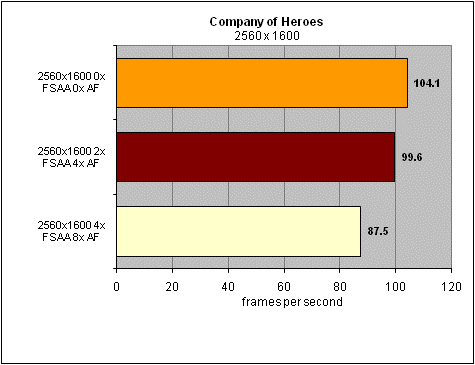
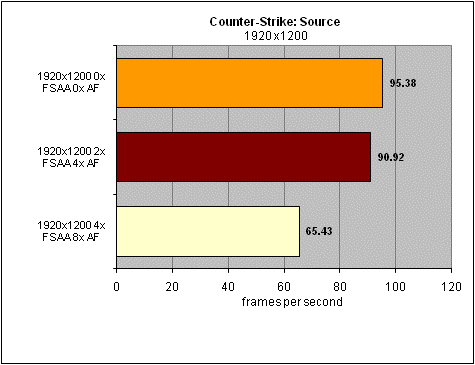
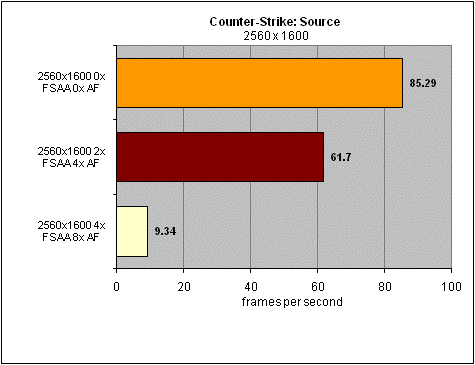
Trusted Score
Score in detail
-
Value 8
-
Features 8
-
Performance 9

